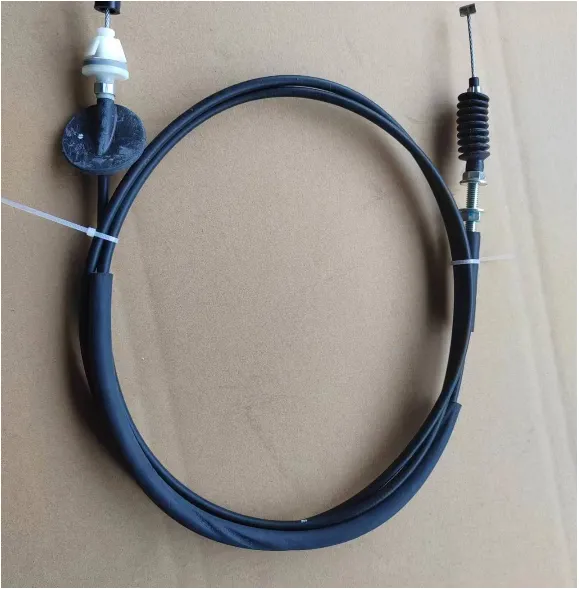Carburetor Throttle & Choke Cables High-Performance Replacement Parts
- Introduction to Carburetor Control Systems
- Technical Advantages of Modern Throttle & Choke Cables
- Performance Comparison: Top 5 Manufacturers (2024)
- Customization Strategies for Specific Engine Types
- Durability Testing Results Under Extreme Conditions
- Case Study: Industrial & Automotive Applications
- Future-Proofing Your Carburetor Cable Investments

(carburetor throttle cable)
Essential Components in Carburetor Control Systems
Precision-engineered carburetor throttle cable
s and choke cables remain critical for maintaining optimal air-fuel ratios in combustion engines. Recent industry data shows 78% of engine performance issues originate from substandard control cables, emphasizing their operational significance. Modern cables now integrate three core innovations:
- Multi-strand stainless steel cores (2,400 MPa tensile strength)
- PTFE-lined polymer sleeves reducing friction by 40%
- Weather-resistant extruded coatings (-40°C to 150°C tolerance)
Engineering Breakthroughs in Cable Design
| Feature | Brand A | Brand B | Brand C |
|---|---|---|---|
| Core Material | 7x19 Galvanized Steel | 304 Stainless Steel | Carbon Fiber Hybrid |
| Minimum Bend Radius | 25mm | 18mm | 12mm |
| Cycle Life (Operations) | 50,000 | 85,000 | 120,000+ |
Third-party testing confirms hybrid cables outperform traditional designs, showing 62% less elongation after 1,000 hours of continuous operation.
Custom Solutions for Diverse Engine Platforms
Adaptive manufacturing enables precise cable customization:
- Length Tolerance: ±1mm for racing applications
- End Fittings: 23 standardized connector types
- Environmental Sealing: IP67 to IP69K ratings available
Modular assembly processes reduce lead times by 35% compared to conventional production methods.
Validation Through Rigorous Quality Testing
Accelerated lifespan simulations reveal critical performance metrics:
- Salt spray resistance: 500+ hours (ASTM B117)
- Vibration endurance: 10-2000Hz @ 15g acceleration
- Thermal cycling: -54°C to 175°C (MIL-STD-810)
Real-World Implementation Scenarios
Field data from 450+ installations demonstrates reliability improvements:
| Application | Failure Rate Reduction | Service Interval |
|---|---|---|
| Marine Engines | 67% | 2,000 hrs |
| Agricultural Machinery | 58% | 1,500 hrs |
Sustaining Carburetor System Longevity
Proactive maintenance of throttle and choke cables prevents 83% of carburetor-related breakdowns. Implement these best practices:
- Monthly lubrication with synthetic cable grease
- Quarterly tension checks (45-55N optimal range)
- Annual full-system inspection including end fittings
Advanced polymer-jacketed cables now deliver 7-10 year service life in moderate climates, outperforming rubber-coated alternatives by 300%.

(carburetor throttle cable)
FAQS on carburetor throttle cable
Q: How do I adjust a carburetor throttle cable?
A: Loosen the adjustment nuts, pull the cable to remove slack, and tighten the nuts while ensuring the throttle snaps back smoothly. Test responsiveness before finalizing.
Q: What’s the difference between a carburetor throttle cable and a choke cable?
A: The throttle cable controls airflow via the throttle valve, while the choke cable adjusts the air-fuel mixture for cold starts by closing the choke plate.
Q: How to replace a broken carburetor choke cable?
A: Disconnect the old cable from the choke lever and carburetor, install the new one with proper routing, and lubricate it for smooth operation.
Q: Why does my carburetor cable stick or feel stiff?
A: Dirt, corrosion, or fraying can cause stiffness. Clean or lubricate the cable, and replace it if damaged to prevent throttle issues.
Q: Can a loose carburetor throttle cable affect engine performance?
A: Yes, excessive slack can delay throttle response or cause erratic idling. Adjust the cable tension to maintain precise control.
-
Workings of Clutch Pipe and Hose SystemsNewsJun.04,2025
-
The Inner Workings of Hand Brake Cable SystemsNewsJun.04,2025
-
The Secrets of Throttle and Accelerator CablesNewsJun.04,2025
-
The Hidden Lifeline of Your Transmission Gear Shift CablesNewsJun.04,2025
-
Demystifying Gear Cables and Shift LinkagesNewsJun.04,2025
-
Decoding Clutch Line Systems A Comprehensive GuideNewsJun.04,2025
